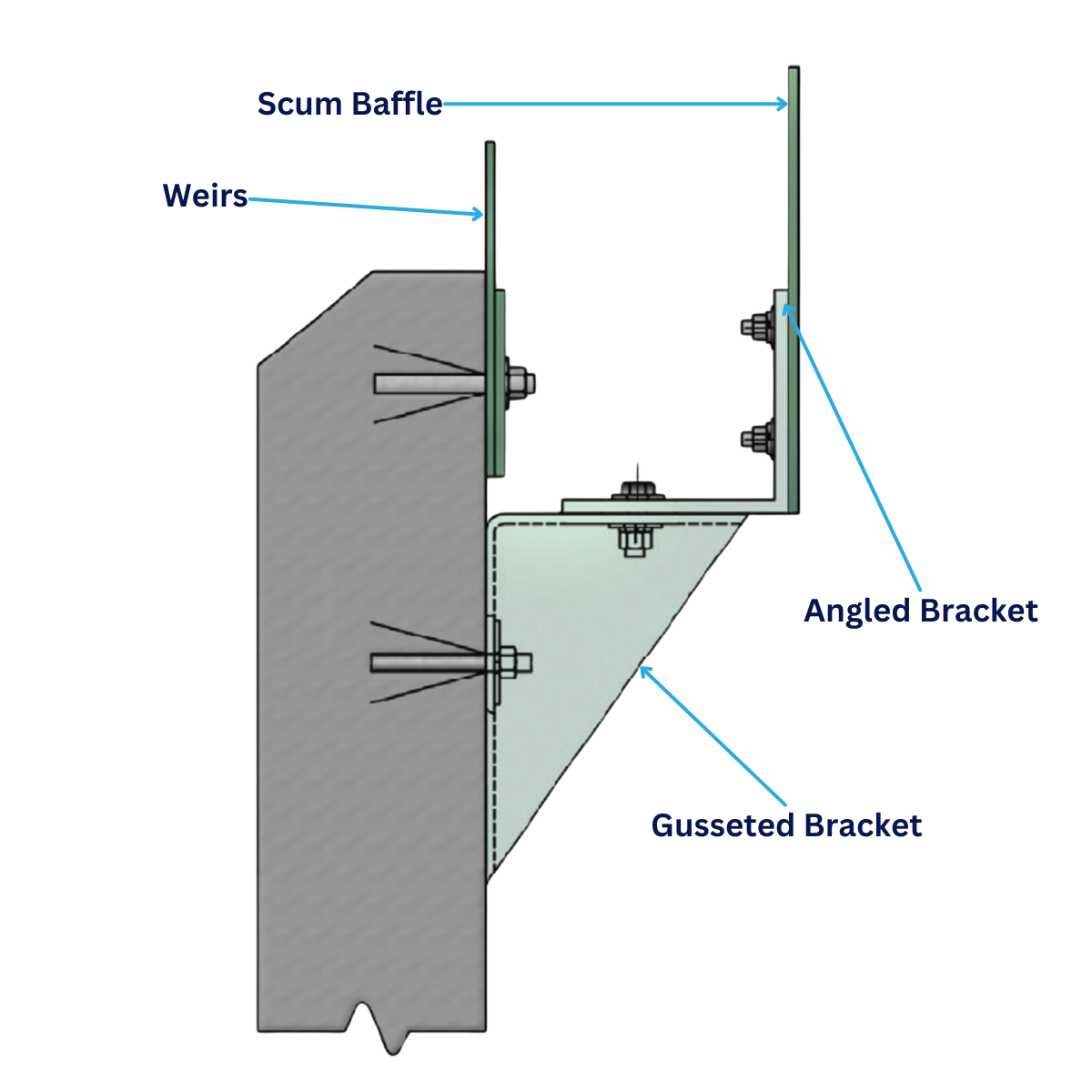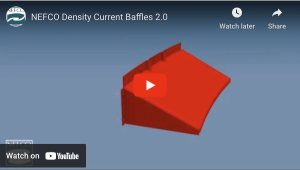WEIRS AND SCUM BAFFLES
WEIRS AND SCUM BAFFLES

WEIRS
NEFCO can meet a wide variety of weir requirements including virtually any size and shape V-notch, rectangular or sharp-crested effluent weir. Weir plates are available in several thicknesses and in lengths up to twelve feet. These long lengths mean fewer splice plates and reduced installation time. Custom lengths up to twenty feet can also be provided. Weirs are supplied complete with weir washers, splice plates, and stainless steel fasteners. NEFCO supplies Isophthalic Polyester (Type I), Vinyl Ester (Type II) and NSF 61 weirs and scum baffles.
SCUM BAFFLES
Scum baffles are available as straight edge panels in a variety of widths ranging from 6″ to 48″ and lengths to twenty feet. For additional rigidity, a 12″ scum baffle with ¾” return flanges at the top and bottom is available. Scum baffles are supplied complete with splice plates, scum baffle brackets, and all of the required stainless steel anchors and fasteners. Several types of baffle brackets are available to suit different application requirements.
MOUNTING OPTIONS

ANGLED BRACKET CONFIGURATION

GUSSETED BRACKET CONFIGURATION

MIXED BRACKET CONFIGURATION
VIDEO & DOWNLOADS
OUR PROCESS
At NEFCO, we have a proven track record of delivering results. All custom products are made to order and our team is committed to providing excellent customer service. We are always on a mission to improve and innovate on all of our patented products. buildings.

FREQUENTLY ASKED QUESTIONS
Why is fiberglass a better choice than steel for wastewater and water reclamation facilities?
How does fiberglass improve the longevity of infrastructure in wastewater facilities?
Does fiberglass require less maintenance than steel in water treatment applications?
How does fiberglass perform in extreme conditions found in wastewater facilities?
Is fiberglass more cost-effective than steel for wastewater treatment infrastructure?
How does fiberglass enhance safety in wastewater facilities?
Can fiberglass structures withstand chemical exposure in water reclamation plants?
How does fiberglass compare to steel in terms of installation and handling?
What are the environmental benefits of using fiberglass in wastewater treatment facilities?
Where is fiberglass commonly used in wastewater and water reclamation facilities?

Let’s Work Together
8895 N. Military Trail, Building C Suite 100
Palm Beach Gardens, FL 33410
[email protected]
Monday – Friday 8AM – 5PM

